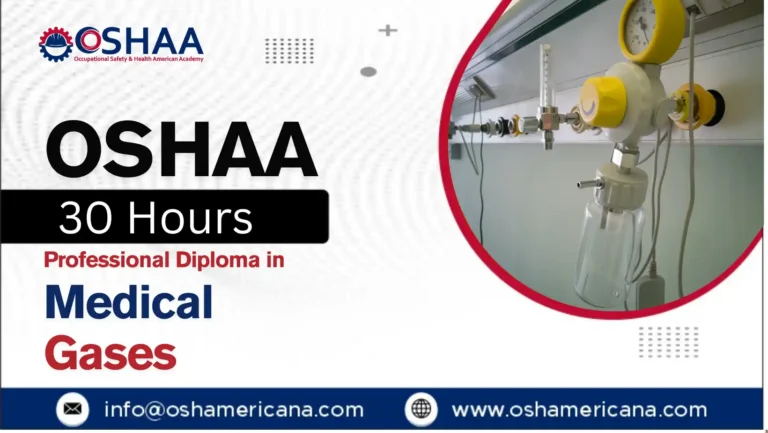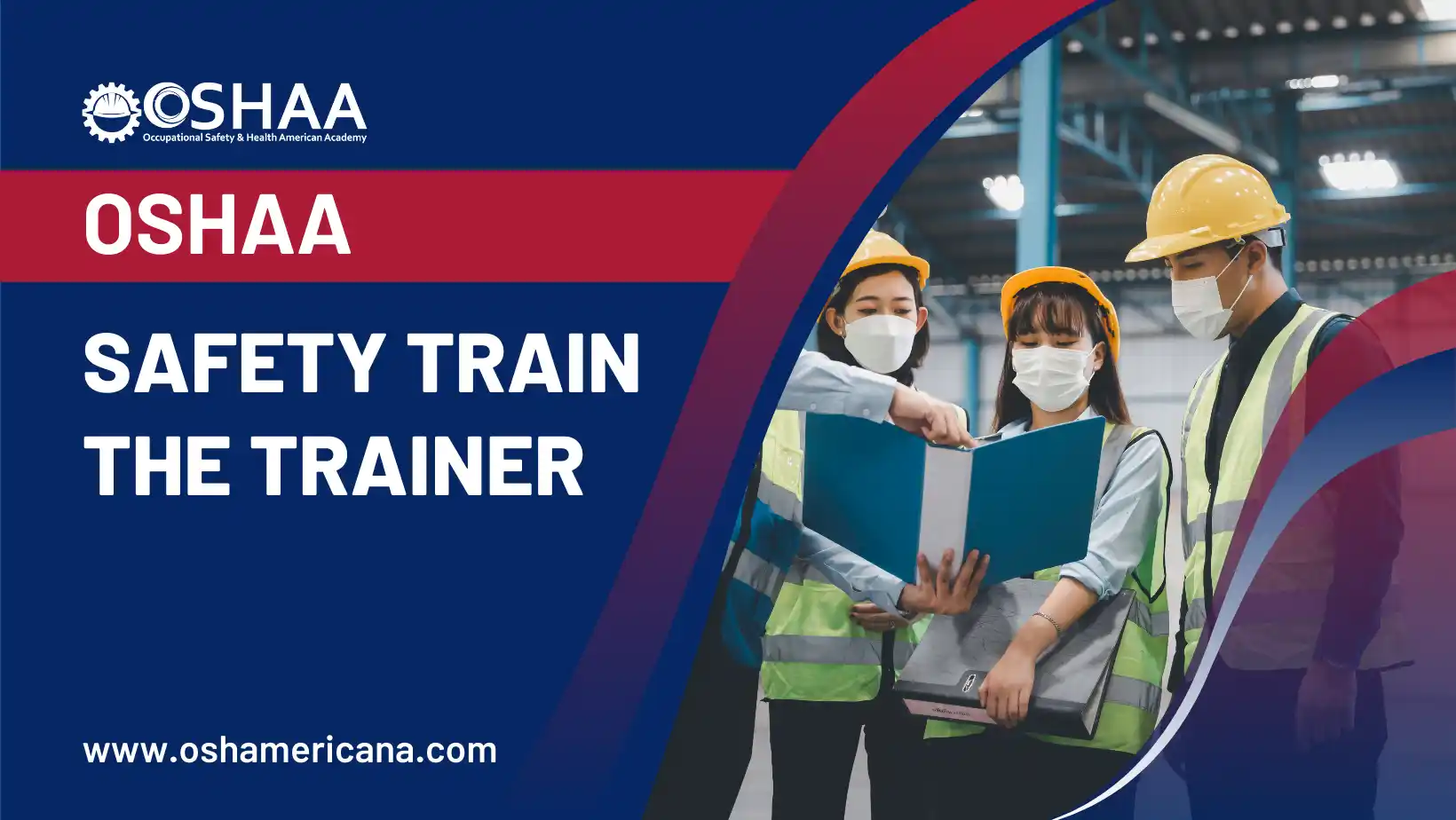Enhance workplace safety and compliance with the OSHAA 30-Hours Introduction to Drug and Alcohol Awareness course. Gain vital skills to prevent and manage substance abuse risks.
The OSHAA 30-Hours Introduction to Drug and Alcohol Awareness is a specialized training program designed to address one of the most pressing issues facing modern workplaces—substance misuse. Drug and alcohol abuse can severely affect productivity, increase absenteeism, create significant safety hazards, and expose organizations to serious legal liabilities. To counter these challenges, industries worldwide are increasingly prioritizing structured training in drug and alcohol awareness. The OSHAA 30-Hours Introduction to Drug and Alcohol Awareness course provides a comprehensive and professional approach to building safer, healthier, and compliant work environments.
This course equips participants with the essential knowledge and skills to recognize, address, and prevent substance abuse in the workplace. Learners gain a clear understanding of how drugs and alcohol impact health, behavior, and job performance, as well as how these issues create risks not only for the individual but for teams, organizations, and overall workplace safety. The OSHAA 30-Hours Introduction to Drug and Alcohol Awareness integrates both theoretical and practical components, ensuring that employees, supervisors, and managers are capable of identifying signs of impairment and implementing appropriate interventions.
Through this program, participants develop a strong foundation in regulatory compliance, organizational responsibilities, and the legal implications associated with substance misuse. The course also emphasizes the creation and enforcement of workplace policies that support a drug-free culture, aligned with OSHA standards and global safety regulations. By focusing on proactive education, early intervention strategies, and effective communication, the OSHAA 30-Hours Introduction to Drug and Alcohol Awareness empowers organizations to reduce risks, improve workforce productivity, and foster a healthier environment for all employees.
For employers and employees alike, this course is a critical resource that promotes both personal well-being and professional accountability. It demonstrates a commitment to workplace safety, reinforces compliance with international occupational health standards, and enhances organizational resilience. Completing the OSHAA 30-Hours Introduction to Drug and Alcohol Awareness ensures that participants are not only better prepared to handle substance-related challenges but also capable of leading initiatives that build stronger, safer, and more responsible workplaces.
OSHAA 30-Hours Introduction to Drug and Alcohol Awareness
To enroll in the OSHAA 30-Hours Introduction to Drug and Alcohol Awareness, learners are expected to meet the following criteria:
1. Age Requirement
- Learners must be at least 18 years of age to enroll in the OSHAA 30-Hours Introduction to Drug and Alcohol Awareness.
- The minimum age requirement ensures that participants are legally eligible for workplace training and responsibilities related to safety and compliance.
- Meeting this age standard also guarantees that learners can fully engage with professional case studies and real-world workplace scenarios covered in the program.
2. Educational Background
- A high school diploma or equivalent qualification is recommended for entry into the OSHAA 30-Hours Introduction to Drug and Alcohol Awareness.
- While not mandatory, higher education in occupational health, safety, or human resources is considered an advantage for learners seeking advanced understanding.
- This educational foundation supports learners in comprehending regulatory requirements, workplace policies, and safety documentation taught throughout the course.
- The OSHAA 30-Hours Introduction to Drug and Alcohol Awareness is designed to be accessible, but learners with prior academic exposure to workplace safety or compliance will benefit from an enhanced learning experience.
3. Work Experience
- No prior work experience is required to join the OSHAA 30-Hours Introduction to Drug and Alcohol Awareness, making it accessible to new professionals entering the workforce.
- However, previous experience in supervisory roles, safety management, or human resources is advantageous for applying course principles to workplace policy and compliance.
- Industry professionals already managing workplace health and safety can further strengthen their ability to identify, manage, and prevent drug and alcohol misuse among employees.
- The OSHAA 30-Hours Introduction to Drug and Alcohol Awareness serves as both an introductory program for new learners and a professional development tool for experienced managers and supervisors.
4. English Proficiency
- Learners must be able to read, write, and speak English fluently to successfully complete the OSHAA 30-Hours Introduction to Drug and Alcohol Awareness.
- Strong English proficiency ensures participants fully understand course materials, OSHA regulations, and global compliance requirements.
- Proficiency in English also enables learners to engage effectively in discussions, workplace communication, and policy development related to drug and alcohol awareness.
- The OSHAA 30-Hours Introduction to Drug and Alcohol Awareness is delivered in English to maintain consistency with OSHA standards and international training practices.
By meeting these eligibility requirements, learners are well-positioned to maximize the benefits of the OSHAA 30-Hours Introduction to Drug and Alcohol Awareness. The course provides essential training for building safer workplaces, ensuring compliance, and equipping professionals with the knowledge and confidence to address substance misuse effectively across industries.
Study Units
Learning Outcomes
The OSHAA 30-Hours Introduction to Drug and Alcohol Awareness is designed to provide participants with essential knowledge, practical skills, and compliance-focused training to address drug and alcohol misuse in the workplace. Through its structured study units, this course equips learners with the ability to recognize risks, implement policies, and foster a drug-free workplace. By completing this course, participants will gain advanced skills in workplace safety, regulatory compliance, and leadership in managing substance abuse challenges across industries.
1. Introduction to Drug and Alcohol Awareness (3 hours)
- Develop a clear understanding of the importance of drug and alcohol awareness in promoting safe, healthy, and productive workplaces.
- Gain knowledge of the objectives, scope, and relevance of the OSHAA 30-Hours Introduction to Drug and Alcohol Awareness.
- Understand how awareness training contributes to reducing absenteeism, increasing productivity, and ensuring organizational compliance.
- Recognize the global importance of substance abuse prevention and its role in aligning with OSHA and international safety standards.
2. Understanding Substance Abuse and Its Effects (4 hours)
- Learn about the physiological, psychological, and social effects of drug and alcohol misuse.
- Identify how substance abuse impacts employee health, decision-making, and workplace performance.
- Gain insights into the short- and long-term effects of commonly misused substances.
- Develop the ability to explain the risks of substance misuse to colleagues and employees, fostering a culture of awareness.
3. The Impact of Drug and Alcohol Abuse on Workplace Safety (4 hours)
- Recognize the link between substance abuse and workplace accidents, injuries, and fatalities.
- Understand how drug and alcohol misuse increases risks in high-hazard industries such as construction, transportation, and manufacturing.
- Learn to evaluate organizational safety risks associated with employee impairment.
- Acquire the skills to communicate safety hazards to workers and reinforce a proactive safety culture.
4. Legal and Ethical Considerations (4 hours)
- Gain knowledge of OSHA regulations, international compliance standards, and workplace safety laws related to drug and alcohol awareness.
- Understand employer and employee responsibilities in creating and maintaining a drug-free workplace.
- Learn about confidentiality, ethical obligations, and the importance of protecting employee rights during interventions and testing.
- Recognize the legal implications of failing to address substance misuse in the workplace.
5. Identifying the Signs of Impairment (3 hours)
- Develop the ability to detect behavioral, physical, and performance-related signs of drug and alcohol impairment.
- Learn observation techniques for supervisors and managers to recognize early warning signals.
- Understand how to document incidents of suspected impairment effectively for compliance and reporting.
- Gain confidence in addressing sensitive situations while maintaining professionalism and fairness.
6. Creating a Drug and Alcohol Policy (4 hours)
- Learn how to design and implement a workplace drug and alcohol policy in alignment with OSHA and international standards.
- Understand the essential elements of an effective policy, including preventive measures, disciplinary procedures, and employee support.
- Gain knowledge of how policies contribute to workplace safety, productivity, and compliance.
- Develop the skills to communicate and enforce policies consistently across an organization.
7. Intervention and Support Strategies (4 hours)
- Learn effective strategies for intervening when employees are suspected of substance misuse.
- Gain skills to conduct supportive, confidential conversations with employees while protecting organizational integrity.
- Understand the importance of Employee Assistance Programs (EAPs) and support services in promoting recovery.
- Acquire the ability to balance disciplinary actions with supportive measures to create a fair and safe workplace environment.
8. Drug and Alcohol Testing in the Workplace (4 hours)
- Understand the role of workplace drug and alcohol testing in ensuring compliance and safety.
- Gain knowledge of different types of testing methods and their applications in workplace settings.
- Learn how to establish clear protocols for fair, consistent, and legally compliant testing.
- Develop the ability to manage testing programs while maintaining confidentiality, trust, and employee rights.
Completing the OSHAA 30-Hours Introduction to Drug and Alcohol Awareness equips participants with advanced workplace safety knowledge, regulatory compliance expertise, and practical leadership skills to manage drug and alcohol challenges effectively. By mastering the learning outcomes across each unit, learners are prepared to lead safety initiatives, implement robust workplace policies, and promote a culture of accountability and well-being. This course empowers professionals and organizations to reduce risks, ensure OSHA and international compliance, and build a safer, healthier, and more productive workplace environment.
The OSHAA 30-Hours Introduction to Drug and Alcohol Awareness offers a wide range of benefits for employees, managers, safety professionals, and organizations committed to maintaining a safe and compliant workplace. This course provides essential knowledge and practical skills that help reduce workplace incidents, improve organizational performance, and ensure compliance with OSHA and international safety standards. By focusing on substance abuse prevention, policy development, and leadership in safety management, the OSHAA 30-Hours Introduction to Drug and Alcohol Awareness equips participants with the tools needed to foster a healthier and more productive workplace environment.
1. Comprehensive Knowledge of Substance Abuse
- Learners gain an in-depth understanding of drug and alcohol misuse, its physical and psychological effects, and how it impacts workplace safety and employee performance.
- This knowledge helps professionals address risks proactively and communicate the importance of awareness effectively across organizations.
2. Regulatory Compliance and Legal Protection
- The OSHAA 30-Hours Introduction to Drug and Alcohol Awareness ensures participants understand OSHA guidelines and international safety regulations.
- By aligning policies and practices with compliance requirements, organizations reduce liability and protect themselves against legal risks.
3. Enhanced Workplace Safety Standards
- Participants learn how substance misuse contributes to accidents, injuries, and fatalities.
- With these skills, safety managers and supervisors can implement preventive measures that lower incident rates and strengthen workplace safety culture.
4. Development of Effective Workplace Policies
- The course provides the knowledge required to create, implement, and enforce drug and alcohol policies.
- Well-structured policies improve organizational consistency, reduce risks, and promote fairness in handling sensitive cases.
5. Professional Development and Career Advancement
- Completing the OSHAA 30-Hours Introduction to Drug and Alcohol Awareness enhances professional credentials, making learners more competitive in the job market.
- It also prepares managers, supervisors, and safety officers for leadership roles by equipping them with advanced compliance and safety management skills.
6. Improved Organizational Productivity
- Addressing substance misuse reduces absenteeism, employee turnover, and workplace disruptions.
- By promoting healthier work environments, organizations benefit from higher levels of focus, efficiency, and output.
7. Cost Savings and Operational Efficiency
- Preventing accidents and reducing absenteeism leads to lower insurance premiums, fewer compensation claims, and reduced operational losses.
- Organizations that implement drug-free workplace strategies experience measurable cost savings and long-term sustainability.
8. Stronger Leadership and Communication Skills
- The OSHAA 30-Hours Introduction to Drug and Alcohol Awareness develops leaders who can address sensitive issues with confidence and professionalism.
- Learners build communication skills that help them manage workplace challenges while maintaining trust and respect.
9. Early Detection and Intervention Skills
- Participants are trained to identify behavioral and performance-related signs of impairment.
- Early detection allows for timely interventions, preventing incidents and protecting employees’ health and safety.
10. Employee Support and Well-being
- The course highlights the importance of employee assistance programs (EAPs) and supportive interventions.
- By creating a supportive workplace, organizations encourage recovery, reduce stigma, and improve overall well-being.
11. Effective Testing and Monitoring Practices
- Learners gain insights into workplace testing methods and their role in ensuring compliance.
- Clear testing protocols help maintain fairness, confidentiality, and trust while reinforcing organizational safety goals.
12. Risk Management and Emergency Preparedness
- The OSHAA 30-Hours Introduction to Drug and Alcohol Awareness trains participants to manage risks associated with impairment-related incidents.
- This proactive approach ensures readiness for emergencies and minimizes workplace disruptions.
13. Continuous Improvement and Organizational Excellence
- Learners are encouraged to evaluate policies and update practices regularly to align with evolving regulations and industry standards.
- Continuous improvement strengthens organizational resilience and demonstrates a long-term commitment to safety excellence.
14. Global Relevance and International Standards Alignment
- The course integrates OSHA and international guidelines, making it highly valuable for multinational companies and global safety professionals.
- Participants gain skills that are applicable across diverse industries and international workplaces.
15. Building a Culture of Accountability and Responsibility
- The OSHAA 30-Hours Introduction to Drug and Alcohol Awareness emphasizes shared responsibility among employers and employees.
- By fostering accountability, organizations create safer workplaces and build trust between leadership and staff.
Completing the OSHAA 30-Hours Introduction to Drug and Alcohol Awareness provides professionals with advanced skills in compliance, policy development, intervention strategies, and leadership. It enables organizations to reduce risks, improve productivity, and protect both employees and assets. This course is an essential investment for industry professionals, safety managers, HR specialists, and organizations seeking to meet OSHA standards, ensure regulatory compliance, and maintain a strong safety culture.
The OSHAA 30-Hours Introduction to Drug and Alcohol Awareness is designed for professionals, organizations, and stakeholders across multiple industries who are committed to maintaining safe, compliant, and productive workplaces. This specialized course provides essential knowledge on identifying, preventing, and managing substance abuse issues, while ensuring strict alignment with OSHA regulations and international safety standards. By equipping learners with advanced skills, regulatory compliance awareness, and professional development opportunities, the OSHAA 30-Hours Introduction to Drug and Alcohol Awareness supports industry leaders and employees in fostering healthier, safer, and more responsible work environments worldwide.
1. Safety Managers
- Responsible for developing and implementing workplace safety programs.
- This course strengthens their ability to integrate drug and alcohol awareness into existing safety systems.
- They gain advanced skills in compliance and hazard prevention to reduce incidents.
- Supports OSHA compliance and strengthens organizational safety culture.
2. Operations Supervisors
- Oversee daily business activities and employee performance.
- The OSHAA 30-Hours Introduction to Drug and Alcohol Awareness helps them recognize impairment signs that may affect productivity and safety.
- They develop intervention skills to manage workplace risks effectively.
- Enhances operational efficiency by minimizing disruptions caused by substance misuse.
3. Human Resource Professionals
- Play a central role in policy-making, employee support, and compliance.
- This training equips them with knowledge to design and enforce drug and alcohol policies.
- They gain skills in handling employee assistance programs and confidential support services.
- Ensures HR departments meet OSHA and workplace safety standards.
4. Health, Safety, and Environment (HSE) Officers
- Tasked with maintaining workplace safety and compliance across industries.
- The course enhances their knowledge of how substance misuse affects workplace safety.
- They learn to conduct awareness sessions and risk assessments effectively.
- Aligns HSE strategies with OSHA training and international best practices.
5. Team Leaders and Supervisors
- Directly manage staff and monitor workplace performance.
- The OSHAA 30-Hours Introduction to Drug and Alcohol Awareness helps them identify behavioral changes linked to substance misuse.
- They develop leadership skills for implementing preventive measures.
- Strengthens supervisory roles by aligning safety with daily operations.
6. Healthcare and Occupational Health Professionals
- Work closely with employees on well-being, health, and risk prevention.
- This course deepens their understanding of substance abuse impacts on health and safety.
- They gain strategies for early detection and referral to support services.
- Enhances integration of health monitoring into workplace safety compliance.
7. Corporate Executives and Business Owners
- Responsible for strategic decisions and corporate governance.
- The OSHAA 30-Hours Introduction to Drug and Alcohol Awareness supports them in building compliant and risk-free organizations.
- They learn about liability reduction and reputation management through effective policies.
- Helps ensure leadership commitment to OSHA compliance and global safety standards.
8. Government and Regulatory Officials
- Oversee safety compliance and industry regulations.
- This training enhances their expertise in evaluating workplace drug and alcohol programs.
- They gain insights into international compliance standards and best practices.
- Strengthens enforcement and guidance to ensure safer industries worldwide.
9. Employees Across Industries
- Workers at all levels are affected by workplace safety and productivity standards.
- The OSHAA 30-Hours Introduction to Drug and Alcohol Awareness provides them with essential knowledge of risks and prevention.
- They learn about personal responsibility and accountability in maintaining a drug-free environment.
- Encourages compliance, reduces risks, and enhances workplace trust.
10. Training and Development Specialists
- Deliver professional training programs within organizations.
- This course equips them with updated materials and methodologies for drug and alcohol awareness.
- They gain skills to integrate OSHA standards into training initiatives.
- Supports ongoing professional development and continuous workplace safety improvements.
The OSHAA 30-Hours Introduction to Drug and Alcohol Awareness equips professionals from diverse roles with the advanced knowledge, professional skills, and compliance expertise required to build safer and healthier workplaces. By fostering a strong safety culture, enhancing operational efficiency, and ensuring adherence to OSHA and international standards, this course empowers organizations to reduce risks, protect employees, and achieve long-term operational excellence.







